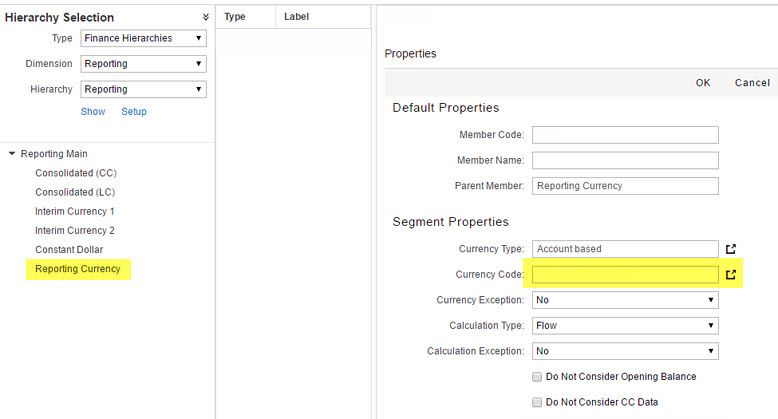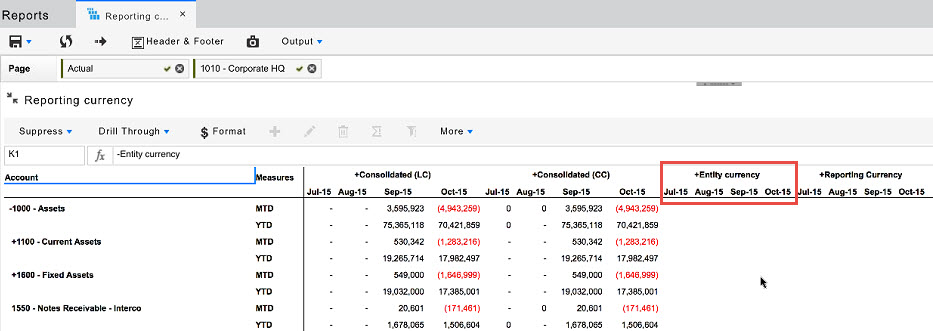- 5 Minutes to read
- Print
- DarkLight
- PDF
March 17 Release Notes
- 5 Minutes to read
- Print
- DarkLight
- PDF
Known and Resolved Issues
Known application issues we are working to resolve, as well as any resolved issues for this release, can be found in the Host Analytics Support Portal, located at hostanalyticsinc.zendesk.com/home.
Support Portal Access
User authentication is required to access the Support Portal. To access the Support Portal directly, setup a password which will work with the email address you use to access your Host Analytics application as follows:
- Navigate to https://hostanalyticsinc.zendesk.com/access/help.
- Enter the email address you use to sign into your Host Analytics application.
- Open your email client and locate the email titled, "Host Analytics, Inc. password reset" and follow the instructions in the email.
Deprecated Items
An ongoing list of product features, components, and functionality which Host Analytics is planning to remove in future releases can be found in the Knowledge Base. Refer to the FAQs document for detailed information.
UI Updates
The following changes have been made to the UI for this release.
Planning Icon
The Planning module icon has been changed to a target (i.e., bulls-eye) image, to make it more distinguishable from the other module icons, and to serve as a better metaphorical representation of Planning activities. The target image is carried through to Planning object icons such as Plans, Plan rollups, and so forth.
Features and Enhancements
Report Sets Enhancements
You can now convert legacy Report Sets created using browsers that did not support the Report Set enhancements in the Winter17 release so that you can use these features. (These UI features and enhancements are available in modern browsers only, i.e., Chrome, Safari, Edge, Firefox, IE 11 compatibility mode OFF).
Conversion Process
With this release, when a legacy Static Report Set (as described above) is accessed from a modern browser, all toolbar options are removed, and you are presented with a link labeled Upgrade Report Set to Access Features.
From that link, clicking Upgrade Old Report Sets to New will open a confirmation window with information about the upgrade process. Clicking Continue with Upgrade applies the changes, and you can then either perform a Save As or Copy for the Report Set. (This same upgrade process is also initiated if you select a legacy Static Report from the File Cabinet and click Copy.)
During the conversion process, a copy of the legacy Report Set is created, and the legacy Report Set is retained in the File Cabinet. The Report Set is also delineated in the UI under the Version column as New.
Security and Access
User Security and Report Access is not copied from the legacy Report Set to the new Report Set. Further, the legacy Report Set in Dynamic Reports is not replaced with the new Report Set.
Properties and Formatting
The converted Report Set inherits all the properties of the legacy Report Set, and applies the following default values for the fields and columns:
Font, Size — Arial, 8
Apply On — Headers + Data
Border Color — Black
Currency Alignment — Left
Negative Number format — (1234)
Thousand Separator — Selected
The formatting functionality for borders, precedence, and so forth, can also now be applied when a new converted Report Set is used in a Dynamic Report.
Migration for Absolute Format
For legacy Report Set lines where Absolute format is applied to Number Format or Scale, precedence is set to Column upon conversion to a new Report Set. For legacy Report Set lines where Absolute format is not applied to Number Format or Scale, precedence is set to Row upon conversion to a new Report Set.
Collaboration Connection with Socialcast
Presently, when you configure Host Analytics' Collaboration feature with Socialcast, the connection token between the system and Socialcast expires after 90 days by default, and you must update and resave the configuration to receive a new connection token from Socialcast.
Contact your Socialcast account administrator if you want to increase the connection token expiration time (e.g., 999 days).
Update Org By Period Labels and Values
The labels for the Active From and Defunct From columns in the Org By Period pane in Hierarchy Management have been changed to From and To, respectively.
Additionally, the To parameter (previously labeled Defunct From, as per above) formerly excluded the period setting in the calculation. So if Defunct From was set to Jan-17, the end date of the calculation was through the end of Dec-16. Now, if the To date is set to Jan-17, the end date runs through the end of Jan-17.
Example
If From date is set to Sep-15 and To date is set to Jan-17, the start date of the calculation begins on the first day of Sep-15 and the end date is calculated on the last day of Jan-17.
Dimension Security API Methods
The following two methods are now available to set or update dimension security, using the Web Services API:
ApplyDimensionSecurity
Applies all the Dimension Security Configuration updates, and refreshes the Finance cube with the latest security information. (Note that this is applicable for Financial cube only.)
Public Function ApplyDimensionSecurity(ByVal LoginName As String, ByVal Password As String, ByVal TenantCode As String) As StandardObjects.OperationResult
UpdateFactlessFactSecurityForUser
Updates all the Dimension Security setup for the specified user, and refreshes the Finance cube with the latest security information. (Note that this is applicable for Financial cube only.)
Public Function UpdateFactlessFactSecurityForUser(ByVal UserLogin As String, ByVal LoginName As String, ByVal Password As String, ByVal TenantCode As String) As StandardObjects.OperationResult
User Admin Page Enhancements
Two columns have been added to the User administration page, via Maintenance > Admin > User Management:
Mapped Date—Date when an External user was mapped to the tenant.
Expiry Date—Date when user's access to the tenant will expire.
Additionally, the Created By and Modified By columns will now show a value of Administrator for External users, since these users are managed internally by Host Analytics application administrators.
Reporting Currency Enhancement, Entity Currency
Previously, Reporting Member configuration did not allow you to generate cash flow reports in Local Currency. You needed to create reporting members which used different currencies calculated to match the desired Local Currency value.
Now, selecting the Entity Local Currency option allows you post a Local Currency to the reporting member with the proper Local Currency calculation.
To add an Entity Currency to a reporting member:
- Navigate to Maintenance > Hierarchy > Hierarchy Management.
- Select Finance Hierarchies as Type, then select Reporting for both Dimension and Hierarchy.
- Click Show. Select the Reporting Currency node you wish to apply an Entity Currency to.
- Select Edit Hierarchy.
- From the Segment Properties section of the Properties pane, expand the Currency Code, select Entity Currency as the Currency Code, then click Save.
- Click Save to save the changes. The entity currency can now be used as a reporting currency when you run your reports.


Additionally, the following options are also available in the Segment Properties section:
Do Not Consider Opening Balance—Select if you want YTD values calculated in first period to exclude the opening balance of the previous period.
Do Not Consider CC Data—Select if you do not want Common Currency value to be converted and reported in Local Currency.

